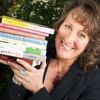
I recently had the pleasure of interviewing Guy Kawasaki who has written 12 books, 10 of which were traditionally published. His newest book, APE: Author, Publisher, Entrepreneur -- How to Publish a Book, which helps people understand how and why to self-publish. Guy shares his thoughts on publishing and why he decided to forgo the traditional model and go indie. In this first of a five-part interview, Guy talks about his decision to self-publish and how his book APE came to be.
Penny - There was a while there where you were being called "the enchantment Guy;" is Enchantment your most recent traditionally published book, or am I mistaken?
GUY - Yes, it is and the experience of trying to help a customer buy 500 eBook copies of Enchantment led me to look into self-publishing. My next book was What the Plus!, about Google Plus. The experience of self-publishing What the Plus! was traumatic, and it led me to write APE. This experience was the genesis of APE.
Penny - So you and I chatted around What the Plus!, and that was your first self-publishing experience. What was that like for you, as a guy coming from New York publishing? Your publisher took really good care of you.
GUY - I have no complaints about Penguin. If the editor, art director, copyeditor, and publicist of Penguin hung out a shingle and started doing what they do independently, I would hire every one of them. But the system in which they work is so inefficient and inflexible. The time from when the copyeditor was done with APE until it was available as a Kindle ebook was one week, and we actually stalled a few days to hit a Monday launch.
In traditional publishing, you have to wait until the book is printed on paper before you sell the ebook, and you cannot sell eBooks any way except through your publisher's resellers. The person who bought 500 copies of Enchantment literally had to enter 500 separate transactions on her credit card. As a self-publisher, if Samsung wants to pay me money and give away the PDF of APE, I can do that. I cannot do that with Penguin.
Penny - What do you think is wrong with publishing? I know that opens the floodgates and we could debate this for an hour!
GUY - It is endemic to any industry that there are certain habits and ways of doing things, and norms that people cannot break out of. Such as, "we will not sell direct" ... I could just go down the list. My interpretation of the issue is this: back in 1930 or whenever, it was a world of limited resources. There was limited printing press access time, limited paper, limited bookshelf space. Somebody had to act as the arbiter of taste. Who was going to judge which book was worth printing? Random House, Putnam, Penguin, Simon & Schuster had people with good taste to look through all the crap and select the diamonds, polish the diamonds, and put it out for the hoi polloi [the many].
I understand the past, but the world is now different. First, electronic shelf space is infinite. Amazon can sell 1 million books, 10 million books, or 50 million books. Authors do not need help in getting dead trees to resellers, because many people are buying eBooks and because CreateSpace and Lightning Source can get books to resellers in a week.
Second, a book's imprint is no longer used as a proxy for quality. When people go to Amazon to buy a book, they look at the number of stars, and they read a handful of reviews. I do not think that they look at a book and say "Putnam is the publisher. I'll buy this book," "Simon & Schuster, I'll buy this book." If you gave me a choice of buying a book with an average of five stars from a publisher that I have never heard of versus. 2.5 stars from Putnam, guess which one I would pick?
Third, the freelance economy didn't exist back then. Prior to the Internet, it was difficult for a novice author to find, reference check, and hire a copy editor, content editor, cover designer, and interior designer. Now you can find all these types of freelancers by using the Internet, and, ironically, they are often the same freelancers that a traditional publisher would have used anyway.
For these reasons, what value does the traditional publisher add? First, you could say that a traditional publisher provides a platform to the author. Putnam can call up the New York Times, call up Penny, call up Arianna Huffington, and Oprah, but Joe Schmoe cannot call them up and get on their show. That's still true, but how many of the authors with traditional publisher get this kind of coverage anyway?
Today authors can build their own platform with social media. Indeed, one of the factors that traditional publishers use to decide whether to acquire a book is the author's platform. Huh? A social-media astute author has to wonder, "Why am I depending on them for marketing? They know fewer people than I do." They may know the publisher and editor of the New York Times Book Review, but how many authors can get a New York Times book review other than the authors who are already successful?
Penny - You know, you bring up a very good point. The publisher is not the brand. Publishers have been extremely helpful in getting distribution into book stores and airport bookstores; those are all really good things. You also know that if somebody has enough platform, like yourself, you could probably negotiate your own bookstore and airport bookstore access.
GUY - I hope you are right. One this is for sure: if you launch an eBook and it does well, you can use a print-on-demand resource such as CreateSpace and Lightning Source to reach bookstores. They would rather have a book that is self-published that is selling than a dog from a traditional publisher that isn't.
Penny - Yes, that is very true. We now live in an age where, as you said earlier, a publisher can easily, or had easier, access to book reviews, big shows, etc. But, we are all direct to consumer now. You do this all the time. Your blog and the work that you do are direct to consumer.
GUY - If the New York Times reviewed APE, which is unlikely to put it mildly, I don't know if it would move the needle. Don't get me wrong I would do backflips just to see my book reviewed by the New York Times, but Arianna Huffington telling five million people to go buy my book may be more effective.
APE: Author, Publisher, Entrepreneur - How to Publish a Book, by Guy Kawasaki and Shawn Welch, is currently available as an ebook ($9.99) and will be released in paperback ($24.99) January 7, 2013. Visit APEthebook.com for more information.
